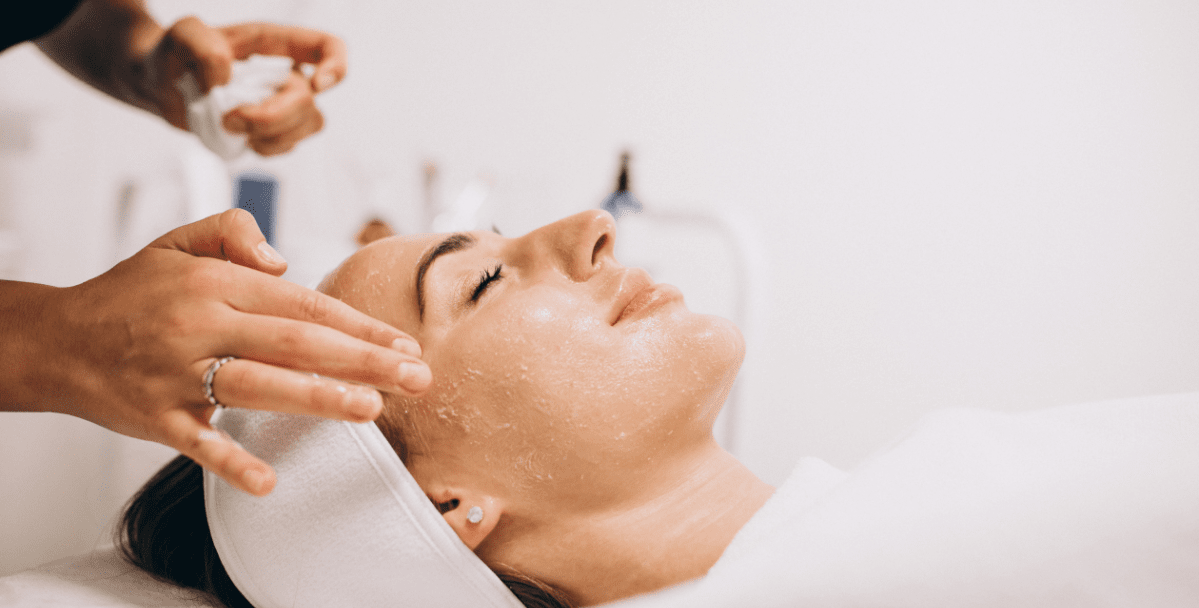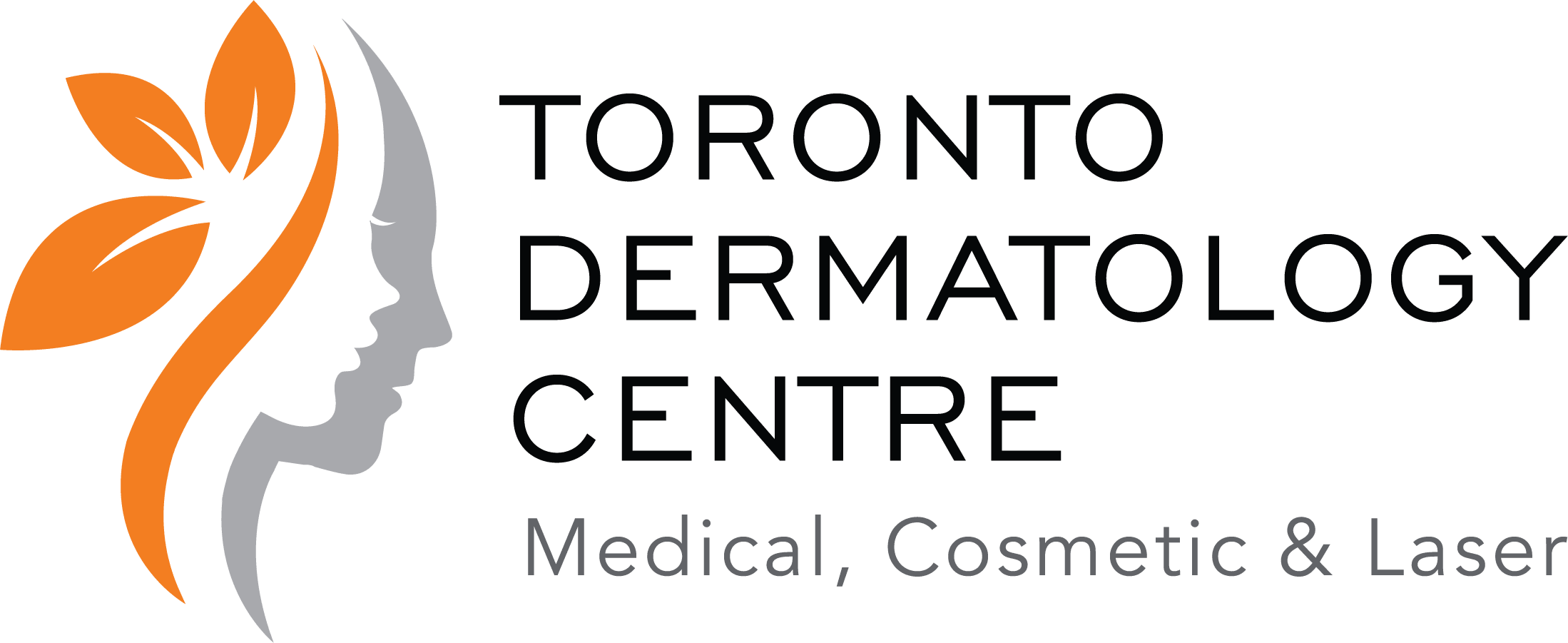Peels are a popular cosmetic procedure in Toronto. Peels are a quick, simple, and safe procedure with nice results and minimal down time.
Many people are scared of peels because of the images of burned faces of many years ago. However, chemical peels have been around for many years, and they are today a safe and non-invasive treatment option for acne, acne scars, aging and sun-damaged skin. Our skin care professionals can guide you in selecting the right peel for you.

Chemical peels are a technique used to improve the appearance of the skin. A chemical solution is applied to the skin that causes it to peel off the top layers and allows new skin to regenerate. The new skin is smoother and less wrinkled than the old skin, and may also be more even in colour.
Millions of chemical peels are performed each year. Dermatologists have used various peeling agents for decades and are experts in performing all types of this procedure.
Today, with the public’s increasing interest in rejuvenating skin and slowing the effects of the aging process, chemical peeling has emerged as an exciting anti-aging procedure.
Results of chemical peels may also be enhanced by new laser/light-based rejuvenation techniques. A thorough evaluation by your medical esthetician is necessary before choosing a chemical peel program.
What can a chemical peel do?
Chemical peeling is used to treat fine lines, especially under the eyes and around the mouth. Wrinkles caused by sun damage, aging, and hereditary factors can be reduced or even eliminated with this procedure. However, sags, bulges, and more severe wrinkles do not respond to peeling and may require other kinds of cosmetic surgical procedures. One of our medical estheticians can help determine the most appropriate type of treatment for each individual case.
Mild scarring and certain types of acne may also be treated with chemical peels. In addition, pigmentation of the skin in the form of sun spots, age spots, liver spots, freckles, blotchiness due to taking birth control pills, and skin that is dull in texture and color may be improved with chemical peeling. Areas of sun-damaged skin and scaling patches may improve after chemical peeling as well. Sunscreens and sun blocks must be used in conjunction with chemical peels in order to decrease the chance of the reappearance of lesions.
How are chemical peels performed?
The procedure may be performed on the face, neck, chest, hands, arms, and legs. Superficial, medium, or deep chemical peels may be used to improve damaged skin. As a rule, the deeper the peel, the longer the recovery time. Your medical esthetician will recommend the best peel for your skin problems.
A chemical peel is usually performed in a dermatologist’s office. The skin is thoroughly cleansed with an agent that removes excess oils, and the eyes and hair are protected. One or more chemical solutions such as glycolic acid, trichloroacetic acid, salicylic acid, retinoic acid, lactic acid, or phenol are used. Your medical esthetician will suggest the proper peeling agent based upon the type of skin damage present and desired results.
During a chemical peel, the solution is gently applied to the skin. The application produces separation and eventually peels off layers of skin (sometimes visible, but many times invisible or “micro” peeling), enabling rejuvenated skin to appear.
During the procedure, most patients experience a warm to hot sensation that may last about five to ten minutes, followed by a stinging sensation. A deeper peel may be more painful and require medication during or after the procedure.
What should be expected after treatment?
Depending upon the type of peel, there may be a mild to severe sun burning sensation. Superficial peeling usually involves redness, followed by scaling that can last three to five days, though many patients experience “micro” peeling where minimal peeling is seen with the naked eye but still occurs at the microscopic level.
Medium-depth and deep peeling can sometimes result in swelling and blisters that may break, crust, turn brown, and peel off over a period of 7 to 14 days or longer. Some peels may require surgical tape to be placed on part or all of the skin that is treated.
It is important to avoid overexposure to the sun immediately after a chemical peel since the new skin is fragile and more susceptible to injury. The staff at the Toronto Dermatology Centre will provide you with appropriate follow-up care to help the skin heal.
What are the possible complications?
In certain skin types, there is a risk of developing a temporary or permanent color change. Birth control pills, pregnancy, or a family history of brownish discoloration on the face may increase the possibility of developing abnormal pigmentation. Persistent redness may also occur and can last for months.
Although very low, there is a risk of scarring after chemical peels. If scarring does occur, it can usually be treated with good results. There is a small incidence of the reactivation of cold sores or herpes simplex infection in patients with a history of fever blisters. Prior to a chemical skin peeling, it is important for a patient to inform the medical esthetician of any past history of keloids, unusual scarring tendencies, extensive radiation to the face, or recurring cold sores, for proper precautions to be taken.
What are the limitations of chemical peels?
Chemical peels cannot remove loose or sagging skin since they cannot eliminate the gravitational forces that produce the loose skin. A facelift, brow lift, laser/light-based skin rejuvenation, or other procedures may be required.
Chemical skin peeling does not remove deep scars. Dermabrasion, laser resurfacing or non-ablative laser therapy, punch grafting, punch elevation, subcision, scar excision, or soft tissue fillers may be much more effective for scars and should be discussed with your medical esthetician.
While chemical peels cannot change pore size or remove broken blood vessels on the face, the procedure may improve the appearance of these conditions.
Speak with one of our skin experts to see if a peel is the right treatment for you.
Here is a selection of media articles quoting our renowned dermatologists Dr. Benjamin Barankin and Dr. Anatoli Freiman as they pertain to treatment with chemical peels. Toronto Dermatology Centre is proud to be among the largest treatment centres for chemical peels in Canada.
Toronto Dermatology Centre is located in Toronto, Ontario, and serves men and women in North York, Vaughan, Richmond Hill, York, Aurora, Thornhill, Mississauga, Etobicoke, Scarborough, Pickering, Peterborough, Guelph, Kitchener, Waterloo, Hamilton, Oshawa, Barrie, downtown, midtown, uptown and all of Greater Toronto (GTA).
*Results may vary from person to person
Thinking of visiting Toronto’s premier skin clinic soon?
Fill out the inquiry form below and let us know your area of interest.
Call us today @ 416.633.0001
